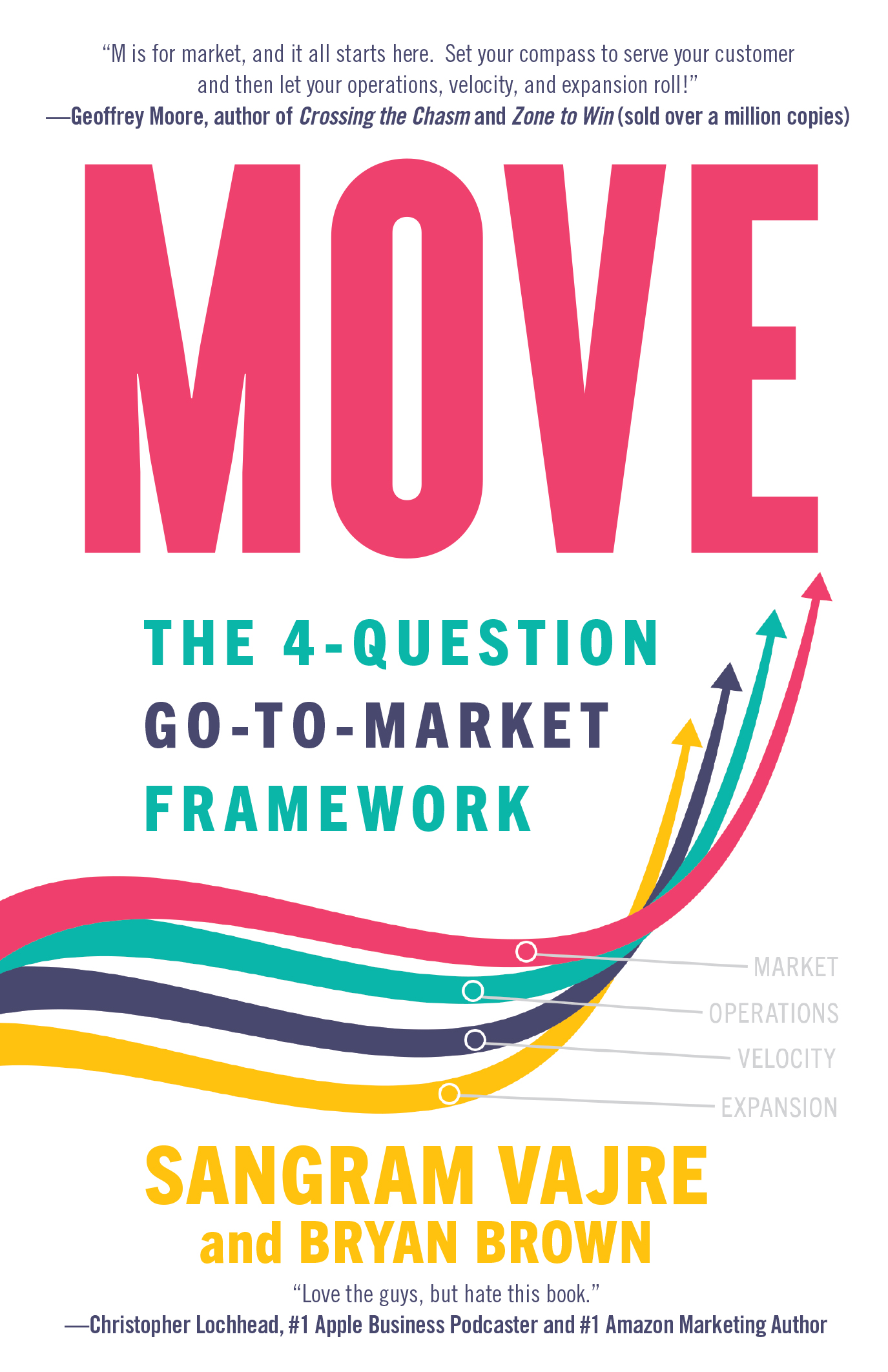Why GTM Must Be Intentional: Terminus Co-Founder Sangram Vajre Discusses New Book ‘MOVE’
- Written by Kelly Lindenau
- Published in Industry Insights
By definition, a go-to-market (GTM) plan seems relatively straightforward: It details how an organization can engage with customers to convince them to buy their product or service and to gain a competitive advantage. However, successful implementation is no easy feat — and it’s often where companies get stuck, a theory Terminus Co-founder Sangram Vajre explains in his new book, “MOVE: The 4-question Go-to-Market Framework.”
Throughout “MOVE,” Vajre and co-author Bryan Brown, Chief Strategy Officer at Terminus, work to provide organizations with a four-question framework that helps companies focus on the who, what, when and where of their business. In the book, Vajre and Brown help guide businesses from ideation to execution to predict their next “move” more confidently.
To learn more about “MOVE” and the role it can play in shaping GTM strategies, we sat down with Vajre to dive deeper into the insights, takeaways and advice.
Demand Gen Report: What inspired you to write “MOVE?” How did your real-life experiences shape the book’s content?
 Sangram Vajre: I’ve written a couple books before that focused on helping marketing and sales thrive, and I realized that most companies don’t fail because they have bad vision or a bad team; they fail because they have a bad GTM process. I spent the last two years researching and talking to highly successful CEOs and just asked, “You’ve gone public, taken the company to $200 million and advised multiple companies of high-growth… what drives it?” And the common answer was always GTM.
Sangram Vajre: I’ve written a couple books before that focused on helping marketing and sales thrive, and I realized that most companies don’t fail because they have bad vision or a bad team; they fail because they have a bad GTM process. I spent the last two years researching and talking to highly successful CEOs and just asked, “You’ve gone public, taken the company to $200 million and advised multiple companies of high-growth… what drives it?” And the common answer was always GTM.
I realized that this topic really needs to shine, so I bought every book I could find on GTM. However, they all focused on channel sales or product launches. Nothing I read focused on creating a GTM process that brings your GTM team (marketing, sales and customer success) together with the product to drive business outcomes, aligns them, helps them orchestrate business or drives into the framework they use and the questions they ask. I realized it just didn’t exist, so that pushed me to put something together.
DGR: Why do many companies struggle to successfully go to market?
Vajre: GTM is not a strategy; it’s not a project — it’s a process. And it fails because most people use it as a strategy.When I was talking to Brian Halligan, CEO of HubSpot, he said he owned GTM as the CEO. That blew my mind! I thought maybe the CMO or CRO owned it, but no, every CEO I spoke with said they owned it. Anybody who thinks otherwise is just kidding themselves. And so, you can sit in any executive room today and ask what stage of the business they’re in — problem market fit, product market fit or platform market fit.
Almost every time I've done it, there was disagreement. Someone would say we’re in problem market fit, whereas others would claim the organization was in product market fit or platform market fit. That’s where the issue lies: If your executive team feels the organization is in a different place, then everybody downstream has different messaging. This alignment is super important and extremely hard, which is what makes GTM so hard to deploy.
DGR: Let’s dive deeper into the three market fits: What are they? How does “MOVE” help organizations understand how to use them correctly?
Vajre: The three P’s of market fit are problem, product and platform, and they are the steps every single company needs to take to evolve. Most companies fail during the transition phase, which is where they really need to ask the right questions to determine where they are and why they’re experiencing challenges.
DGR: What questions can organizations ask to identify where they fall within the three P’s? How did you determine the best questions to ask?
Vajre: When we started the research, we had about 50 questions we were asking people, and it came down to the same four: Who do you market to? What do you need to operate effectively? When can you scale your business, and in which areas can you grow the most? These are the same exact questions, regardless of what business stage you’re in. But here’s the kicker — the answer is always different.
For example, in problem market fit, it might mean, “Oh, I should be going after my total addressable market.” Then, in product market fit, you identify the segment to go after that works and is repeatable and scalable. Finally, in a platform market fit, you realize you have thousands of customers and you need to identify the cohort that’s driving the most revenue and determine how to serve them best.
While the questions are the same, the answer changes — it’s the same thing for operations. When deciding how to operate effectively in the early problem market fit stage, you have financing, which is tracking all of your metrics. When you get to product market fit, you may have marketing, sales, product and customer success operations. But when you move to platform market fit, you’re actually going to have a revenue operations team, which will change the way you drive your business outcomes.
The third question — which is asked by every single company — is, “When can we scale our business?” And they can’t answer that question unless some of the ratios in problem, product and platform market fit are operating at the right level. Finally, the last question is, where can we grow the most? Most companies in product market fit would start with a sales team and say, “Well, we need to hire more salespeople,” but then they find a few years later that they can actually partner with an agency.
Look at HubSpot: 40% of its revenue comes from agencies, meaning it figured out a way to expand its sales team without hiring a single salesperson. While some companies would go international, others would go into different verticals. Identifying where you can grow the most will help you figure out where you need to be innovative. The great part is the questions are the same; but the answers will be different based on each business stage.
DGR: What is the biggest takeaway you want readers to get from “MOVE”?
Vajre: I have a quote that I’ve said several times: Being intentional is more important than being brilliant. And most companies and founders are brilliant; it’s how they get ideas and drive business. But what kills it is the lack of intention. If there’s anything that can summarize what GTM is, it’s about intentionality as an organization. GTM forces you to be intentional, and so “MOVE” really gives you a blueprint of how to be intentional around growing your business.
“MOVE: The 4-Question Go-to-Market Framework” is available for purchase now at Amazon, Barnes & Noble, Target and other places where books are sold.


